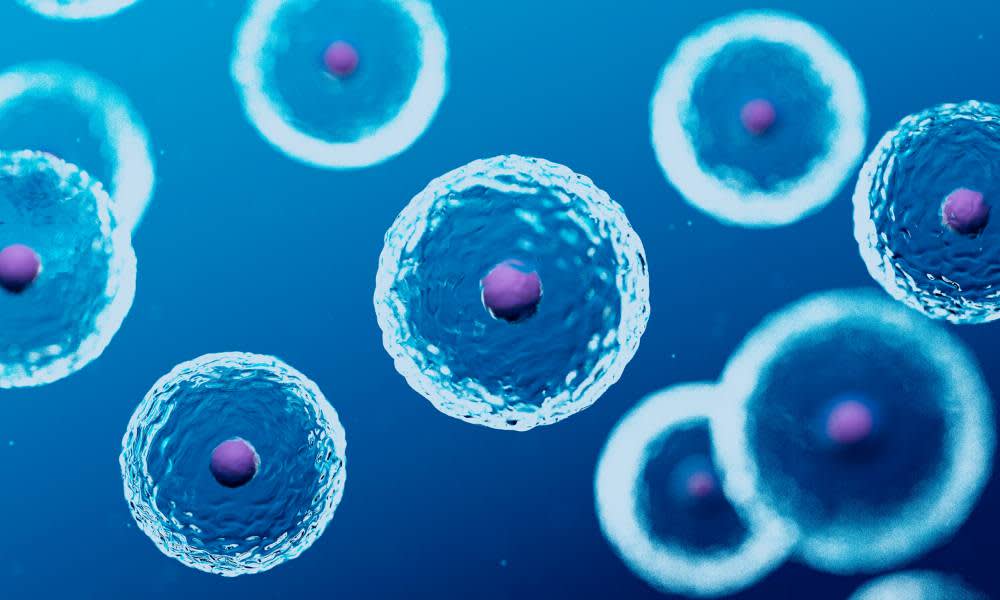Finally, after all the controversies, gene editing is becoming a major force for good.
You probably last heard about CRISPR/Cas9 technology when a rogue Chinese scientist played god and used it to alter the genome of twins to make them HIV resistant, outraging pretty much everyone in science.
But in two clinical trials in the US, gene editing is being used to treat two patients suffering from incurable genetic illnesses, beta thalassemia and sickle cell disease. While the patients are not fully cured yet, the results so far are so promising they’re resonating across the medical world.
“This is a very important development,” Professor Robert Brink, head of the B Cell Biology Laboratory at the Garvan Institute of Medical Research in Sydney, tells The Latch.
“Unlike the controversial experiments using CRISRP to change genes in embryos, this treatment of non-inheritable stem cells is where CRISPR will have its big impact on human health,” he says.
A powerful molecular machine
In nature, CRISPR/Cas9 is a molecular machine that bacteria use to slice up the DNA of enemy viruses.
Scientists have adapted it to alter DNA sequences and modify gene function for everything from improving crops to turning animals into organ donors.
In the two clinical trials conducted by biotechnology companies, Vertex Pharmaceuticals and CRISPR Therapeutics, bone marrow stem cells were extracted from the patients, edited to fix the genetic mutations causing the diseases and infused back into the bone marrow.
In the sickle cell trial, the reinfused stem cells re-established themselves and started producing a special protein at the higher levels necessary to alleviate the blood disorder.
Some minor side effects experienced by the patients were said to be due to the treatment to wipe the mutation-carrying bone marrow cells remaining in the patient, rather than to the genetically altered stem cells.
Just the beginning
Experts say this is only the beginning for gene editing in medicine.
“The areas of medicine where CRISPR will likely have the most impact are inherited diseases where a disease-causing variation can potentially be corrected in the right cells,” says Prof Brink.
“These include blood diseases such as the example described, anaemia, but also immunodeficiencies (where people get recurrent infections) and potentially autoimmune diseases such as lupus and arthritis.”
Associate Professor Greg Neely, head of the Dr. John and Anne Chong Lab for Functional Genomics at Sydney University, uses CRISPR to find genes responsible for human disease. He says the results of the US beta thalassemia and sickle cell trials is extremely promising news.
“If this can be reproduced in more patients, and if there are no further reported side effects, then yes this is a huge breakthrough,” he says.
“We have known for years that this technology works extremely efficiently in mice, but it was still possible that it wouldn’t well in humans. These new results really argue that CRISPR will end up showing similar high efficiency in humans, and this really opens up a new type of medicine.”
Like Professor Brink, Prof Neely points to blood-related diseases as the first he expects to be tackled successfully with CRISPR.
“Sickle Cell and beta thalassemia first, but then also most likely HIV. When combined with immune therapies, CRISPR can also have a major impact on many cancers as well. Then after blood, probably liver diseases will be next, since it’s pretty easy to get things into the liver from the blood,” he says.
“Eventually, if things continue to go well clinically, CRISPR can be used to modulate many human genes for almost any common disease, but that’s 10, 20 years down the track,” he says.
The consensus is that if gene editing delivers on its promise, it will be a breakthrough on a par with some of the greatest advances in medicine,which includes the discovery of penicillin in 1928, or the successful transplanting of organs, which began with a kidney, in 1954.







